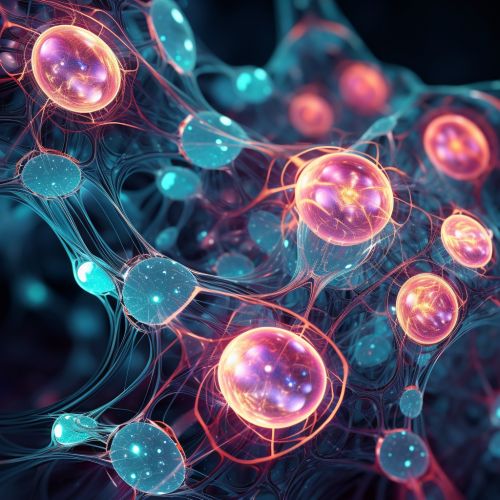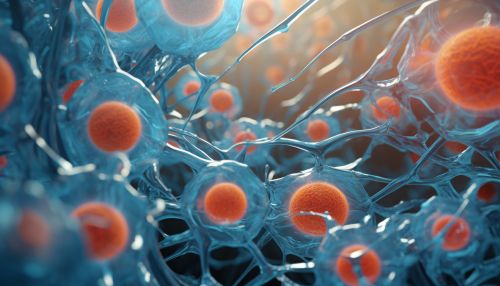Cellular communication
Introduction
Cellular communication refers to the interactions between cells that allow them to coordinate and function effectively within a larger biological system. This form of communication is essential for many biological processes, including development, immune responses, and the regulation of bodily functions.
Cellular Communication Mechanisms
Cellular communication can occur through several mechanisms, each of which involves the transmission of signals from one cell to another.
Direct Contact
In direct contact communication, cells communicate by touching each other. This can occur through gap junctions, which are protein channels that connect the cytoplasm of two cells, allowing for the direct transfer of ions and small molecules.
Paracrine Signaling
In paracrine signaling, cells communicate by releasing signaling molecules into the extracellular environment. These molecules then diffuse to nearby cells and bind to their receptors, triggering a response. This type of signaling is often used in wound healing and inflammation.
Endocrine Signaling
Endocrine signaling involves the release of hormones into the bloodstream by endocrine cells. These hormones can then travel to cells throughout the body, where they bind to specific receptors and elicit a response. This type of signaling is crucial for the regulation of bodily functions such as metabolism and growth.


Signal Transduction
Signal transduction is the process by which a signal is transmitted from the cell surface to the interior of the cell, leading to a specific cellular response. This process often involves a series of steps known as a signaling cascade.
Receptor Activation
Signal transduction begins when a signaling molecule binds to a receptor on the cell surface. This binding event triggers a conformational change in the receptor, activating it and allowing it to interact with other proteins inside the cell.
Signal Amplification
Once the receptor is activated, it can trigger the activation of multiple downstream proteins, amplifying the signal. This amplification allows a single signaling molecule to elicit a large cellular response.
Response
The final step in signal transduction is the cellular response. This can involve changes in gene expression, alterations in cell metabolism, or other cellular processes. The specific response depends on the type of signal and the cell type.
Cellular Communication in Disease
Disruptions in cellular communication can lead to disease. For example, mutations in signaling proteins can lead to uncontrolled cell growth and cancer. Additionally, defects in immune cell communication can result in autoimmune diseases or immunodeficiencies.
Conclusion
Cellular communication is a complex and vital process that allows cells to coordinate their activities and respond to changes in their environment. Understanding the mechanisms of cellular communication can provide insights into the development of diseases and potential therapeutic strategies.
